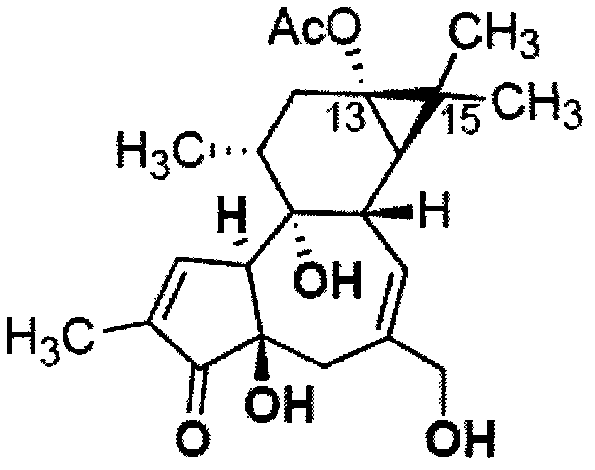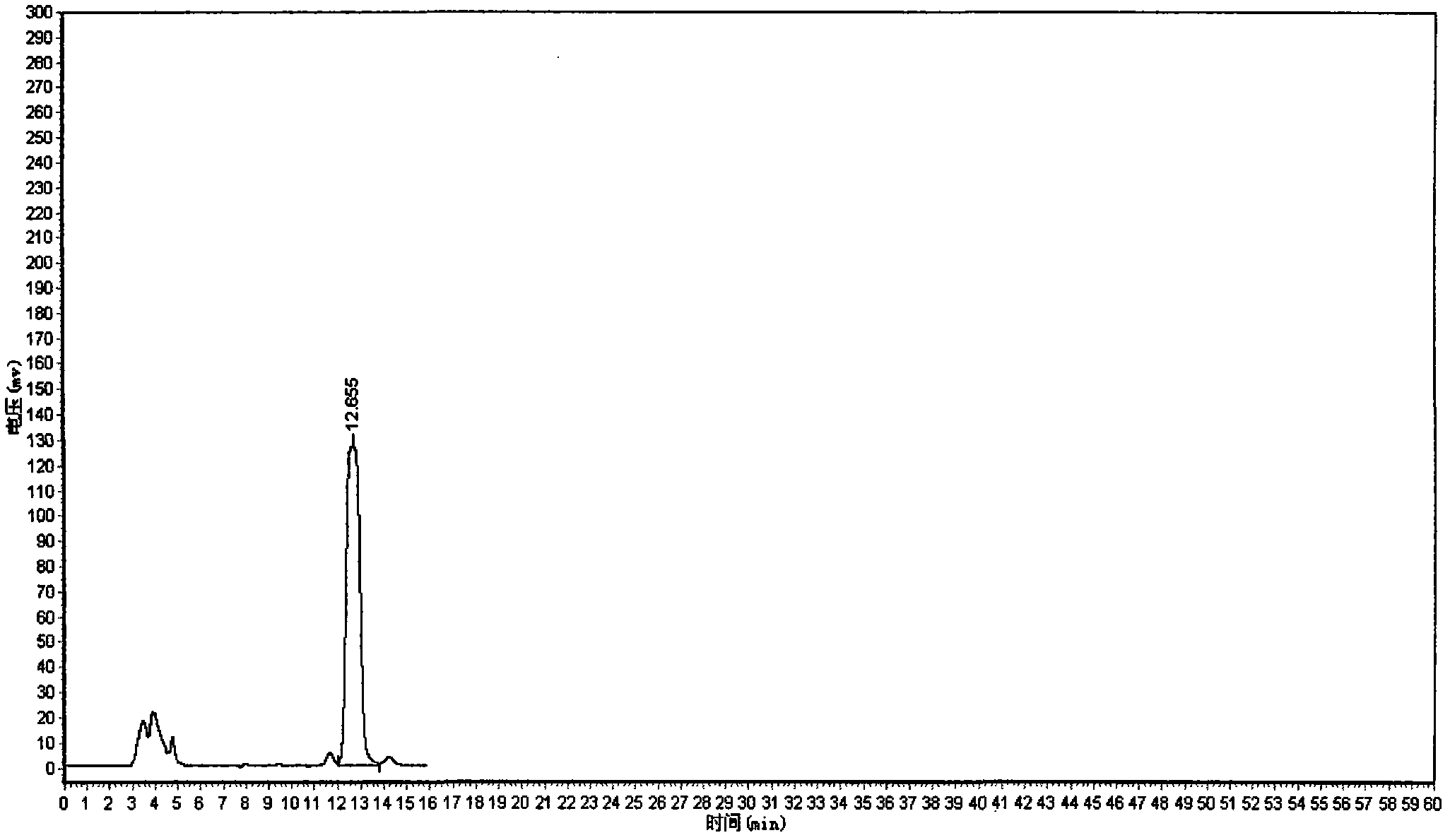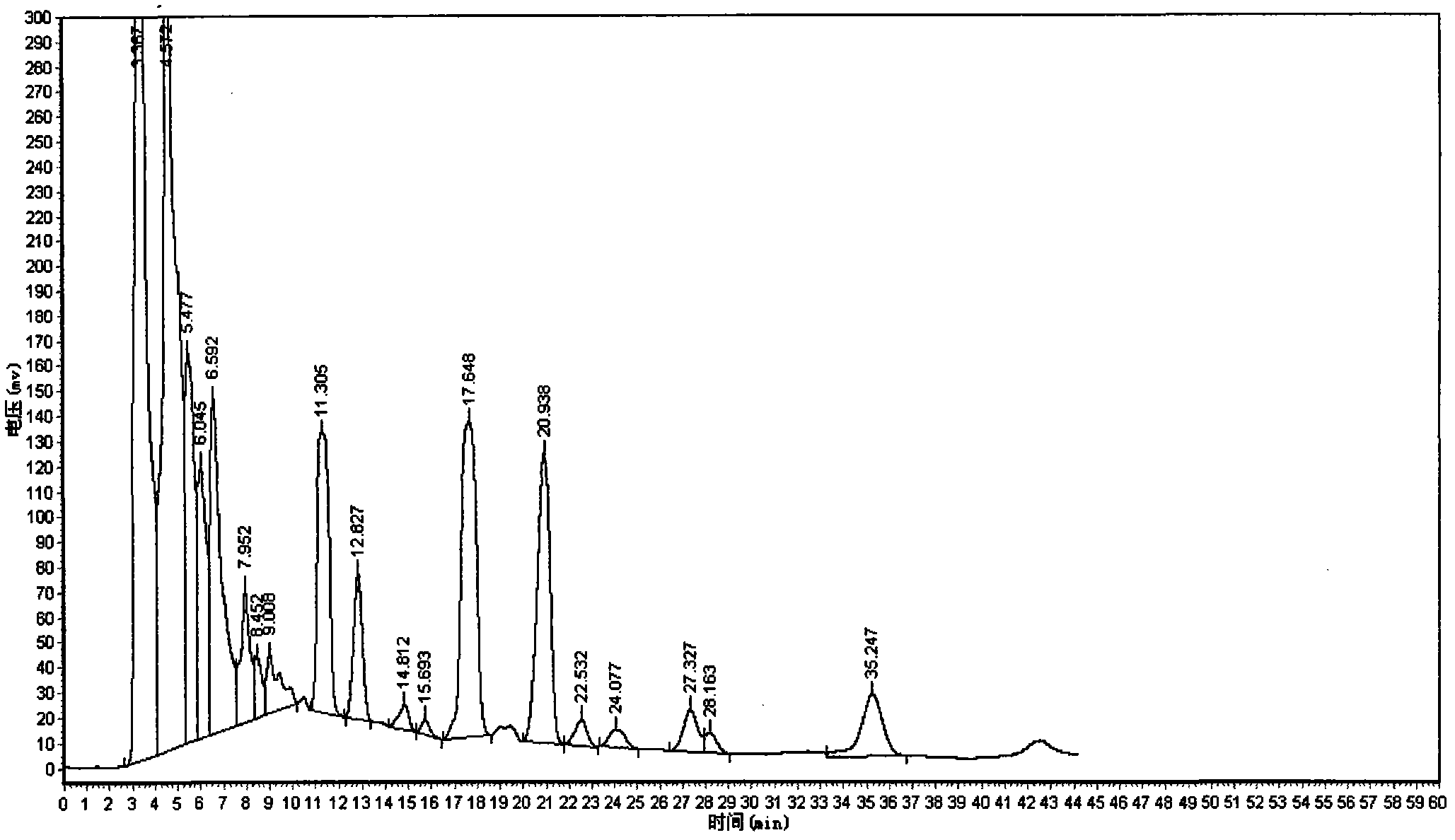Method of induction and tissue culture for adventitious roots of Euphorbia fischeriana
A tissue culture, wolf venom technology, applied in the field of cell engineering, can solve problems such as no literature report, no wolf venom cell, tissue culture and production method, and achieve the effects of simple method, high content and high efficiency.
- Summary
- Abstract
- Description
- Claims
- Application Information
AI Technical Summary
Problems solved by technology
Method used
Image
Examples
Embodiment 1
[0026] Embodiment 1: the germination of wolfbane seed
[0027] Get the seeds of the wild chamaejasmea plant, through 0.2% HgCl 2 Disinfect for 12 minutes, rinse with sterile water for 3 times, place on MS solid medium without any plant growth regulator, and cultivate for 25 days at 26°C and 3000 lux light conditions, and then germinate into seedlings .
[0028] Implementation effect: the germination rate of chamaejasma seeds reaches 5.0%, and the germinated sterile seedlings have complete roots, stems and leaves, and grow normally.
Embodiment 2
[0029] Embodiment 2: Induction of chamaejasma callus
[0030] The 3 centimeter-long aseptic seedlings of chamaejasma chamaejasme that embodiment 1 obtains are placed in containing 1mg / L 2,4-dichlorophenoxyacetic acid (2,4-D), 0.5mg / L naphthaleneacetic acid, 0.1mg / L 6 -Benzylaminoadenine (6-BA) three kinds of plant growth regulators and MS solid medium of 3ml / L coconut milk, inducing 25 days under 24-26 ℃ of sterile light-proof conditions, promptly obtain the healing of chamaejasma damage tissue.
[0031] Implementation effect: the induction rate of chamaejasma chamaejasma callus reached 80.0%. The joint action of 2,4-dichlorophenoxyacetic acid (2,4-D), naphthaleneacetic acid, 6-benzylaminoadenine and coconut water promoted the formation and growth of callus.
Embodiment 3
[0032] Embodiment 3: Induction of the adventitious root of chamaejasma
[0033] Place the chamaejasma chamaejasma callus that embodiment 2 obtains on the MS solid medium containing this plant growth regulator of 10mg / L indole butyric acid and 2ml / L coconut milk, in 24-26 ℃ of sterile light-proof conditions After 25 days of induced culture, the adventitious roots of chamaejasma chamaejasma were obtained.
[0034] Implementation effect: the induction rate of adventitious roots reaches 90.0%, the adventitious roots are thin and short, and thin and short adventitious roots are produced laterally, and the adventitious roots undergo slight callus.
PUM
 Login to View More
Login to View More Abstract
Description
Claims
Application Information
 Login to View More
Login to View More - R&D
- Intellectual Property
- Life Sciences
- Materials
- Tech Scout
- Unparalleled Data Quality
- Higher Quality Content
- 60% Fewer Hallucinations
Browse by: Latest US Patents, China's latest patents, Technical Efficacy Thesaurus, Application Domain, Technology Topic, Popular Technical Reports.
© 2025 PatSnap. All rights reserved.Legal|Privacy policy|Modern Slavery Act Transparency Statement|Sitemap|About US| Contact US: help@patsnap.com



